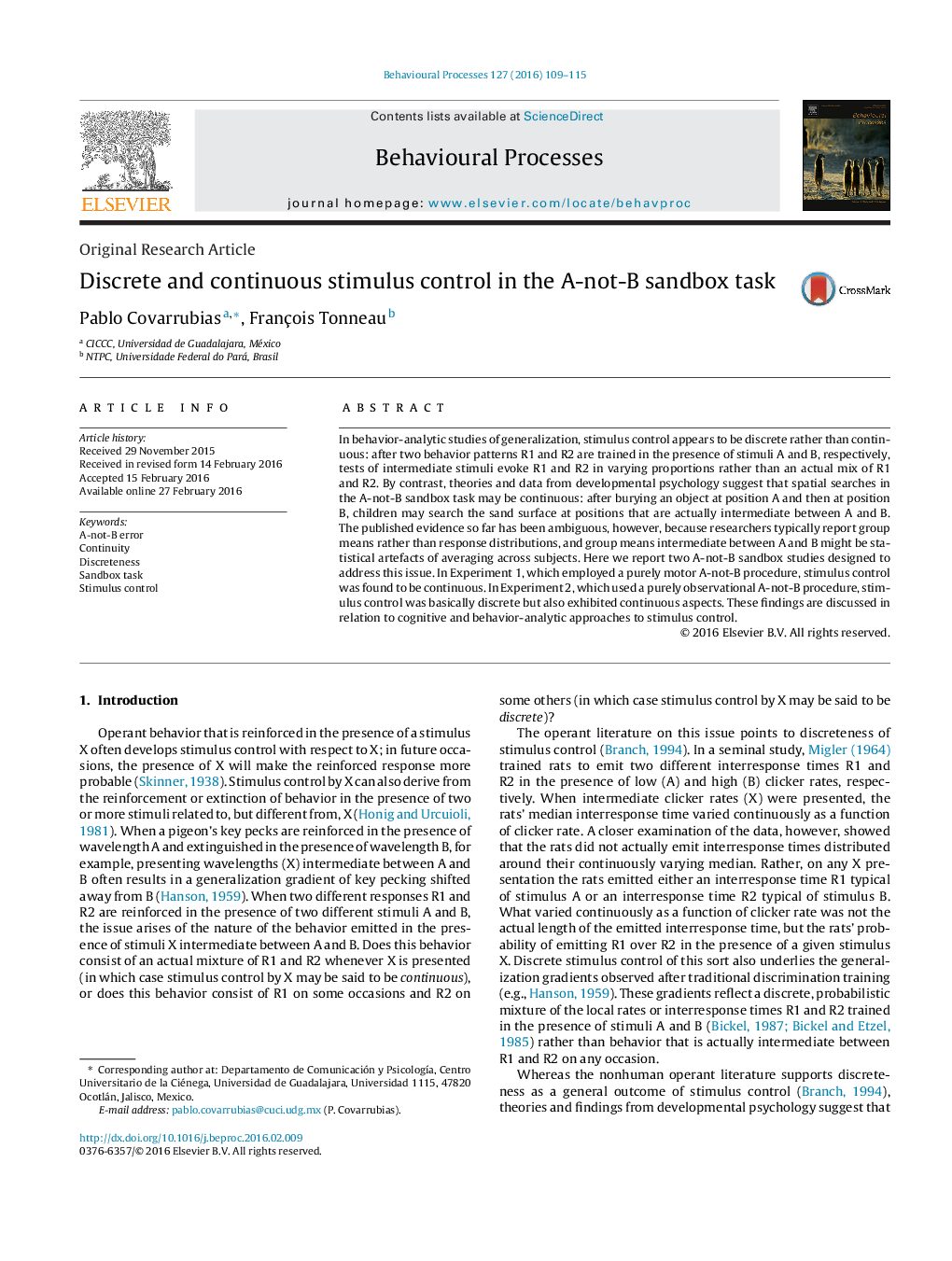| Article ID | Journal | Published Year | Pages | File Type |
|---|---|---|---|---|
| 2426441 | Behavioural Processes | 2016 | 7 Pages |
•The A-not-B effect was found in a purely motor version of the A-not-B sandbox task.•Stimulus control in the motor A-not-B sandbox task was continuous.•The A-not-B effect was also found in a visual version of the A-not-B sandbox task.•Stimulus control in the visual task exhibited both discrete and continuous aspects.
In behavior-analytic studies of generalization, stimulus control appears to be discrete rather than continuous: after two behavior patterns R1 and R2 are trained in the presence of stimuli A and B, respectively, tests of intermediate stimuli evoke R1 and R2 in varying proportions rather than an actual mix of R1 and R2. By contrast, theories and data from developmental psychology suggest that spatial searches in the A-not-B sandbox task may be continuous: after burying an object at position A and then at position B, children may search the sand surface at positions that are actually intermediate between A and B. The published evidence so far has been ambiguous, however, because researchers typically report group means rather than response distributions, and group means intermediate between A and B might be statistical artefacts of averaging across subjects. Here we report two A-not-B sandbox studies designed to address this issue. In Experiment 1, which employed a purely motor A-not-B procedure, stimulus control was found to be continuous. In Experiment 2, which used a purely observational A-not-B procedure, stimulus control was basically discrete but also exhibited continuous aspects. These findings are discussed in relation to cognitive and behavior-analytic approaches to stimulus control.
